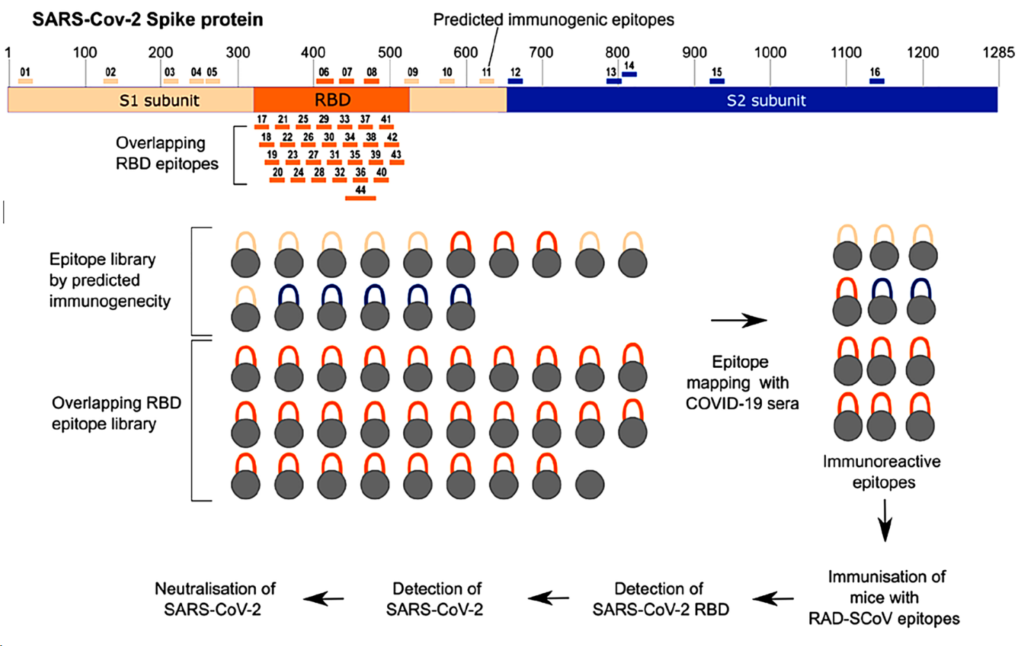Victor Bolsanelli Cioffi, Maria Fernanda de Castro‑Amarante, Aleksei Lulla, Robert Andreata‑Santos, Mario Costa Cruz, Ana Carolina Ramos Moreno, Mariângela de Oliveira Silva, Bianca de Miranda Peres, Lucio Holanda Gondim de Freitas Junior, Carolina Borsoi Moraes, Edison Luiz Durigon, Nicola Coker Gordon, Marko Hyvönen, Luís Carlos de Souza Ferreira & Andrea Balan
Scientific Reports 13: 16821 (2023)
DOI: 10.1038/s41598-023-43720-8
Pubmed: 37798298
Abstract
Amongst the potential contribution of protein or peptide-display systems to study epitopes with relevant immunological features, the RAD display system stands out as a highly stable scaffold protein that allows the presentation of constrained target peptides. Here, we employed the RAD display system to present peptides derived from the SARS-CoV-2 Spike (S) protein as a tool to detect specific serum antibodies and to generate polyclonal antibodies capable of inhibiting SARS-CoV-2 infectivity in vitro. 44 linear S-derived peptides were genetically fused with the RAD scaffold (RAD-SCoV-epitopes) and screened for antigenicity with sera collected from COVID-19-infected patients. In a second step, selected RAD-SCoV-epitopes were used to immunize mice and generate antibodies. Phenotypic screening showed that some of these antibodies were able to recognize replicating viral particles in VERO CCL-81 and most notably seven of the RAD-SCoV-epitopes were able to induce antibodies that inhibited viral infection. Our findings highlight the RAD display system as an useful platform for the immunological characterization of peptides and a potentially valuable strategy for the design of antigens for peptide-based vaccines, for epitope-specific antibody mapping, and for the development of antibodies for diagnostic and therapeutic purposes.

